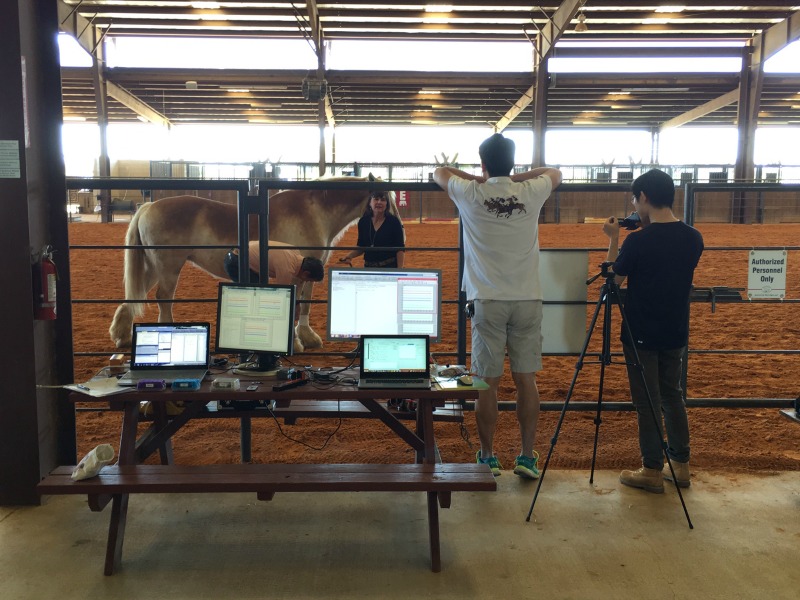
ROCK is committed to documented outcomes and impacts of this partnership with the horse. This is seen in the over 20 research collaborations that ROCK has completed with local universities and most recently as ROCK and TAMUS Courtney Cares partner with local departments at Texas A&M for further research.
Three articles have been published with Baylor University in peer-reviewed journals and continue to add to the information of “how and why” this connection and therapeutic activity is so powerful for children, adults, and veterans.
At ROCK we apply our core values of Honor, Integrity, Compassion, Excellence, and Safety to everything we do.
Healing Thru Horses…
Horses and Humans share similar pelvic movement patterns at the walk, so a person riding a horse receives a simulated walking experience with the horse’s movement. * Often the rider can receive up to 160 bilateral, symmetrical and rhythmical impacts in just one minute which provides a biofeedback opportunity for the neuromuscular system (brain, nerves, and muscles). For example, during speech therapy, the body systems that support speech and language skills help improve posture, motor skills and attention to task, while offering a positive impact on the vestibular and respiratory systems. The horses nature and the barn setting offer a natural environment for learning language and communication. When supportive staff and ROCKateers are added, improved behavior and social skills result as well. Physical Therapists focus on improved balance and body awareness for physical improvement and safety.
For children with sensory issues, such as those with Autism or children who have body awareness issues, not knowing where their body is in space, the horse’s movement provides deep pressure with each step. This input helps train neural pathways and processing, and provides a calming effect on the nervous system that helps the rider respond to the world in a more proactive way. For our adults rehabilitating from stroke or head injury, the resounding movement of the horse provides incredible feedback for relearning functional life skills and achieving independence.
Connections and Leadership: When our veterans and at-risk youth learn to lead the horse and experience boundaries, they often learn or regain the skill and confidence needed to be the CEO of their life. For many individuals this produces a feeling of peace, decreased anxiety**, and improvement in quality of life.
Other opportunities when the local school makes the barn their classroom, educators and ROCK staff and Rockateers partner to offer a catalyst for reaching a child’s goals. Additional opportunities are when children and adults want to compete in local horse shows and Special Olympics resulting in the participation of team sports with the pride of improving skills. All this results in a social environment for training of appropriate behavior as well as love and acceptance. A winning combination with these incredible horses.
At ROCK, we believe that healing takes place in community. We offer that community as our riders are surrounded by their families, ROCKateers, professional staff, all connecting and centering around the lessons and movement of the horse. The continued research, testimonies and data collection will only yield more information as to why the horse – human connection heals.
Using Therapeutic Riding as an Intervention for Combat Veterans: An International Classification of Functioning, Disability, and Health (ICF) Approach Published online: 28 Jun 2017 ** Beth A. Lanning, Amelia L. Wilson, Nancy Krenek, and A. Alexander Beaujean (2017). Using Therapeutic Riding as an Intervention for Combat Veterans: An International Classification of Functioning, Disability, and Health (ICF) Approach. OCCUPATIONAL THERAPY IN MENTAL HEALTH
Human Pelvis Motions When Walking and When Riding a Therapeutic Horse Published online 28 November 2014 *Garner, Brian & Rhett Rigby, B. (2014). Human pelvis motions when walking and when riding a therapeutic horse. Human movement science.
Effects of Equine Assisted Activities on Autism Spectrum Disorder Published 14 February 2014
Physical Therapy Treatments Incorporating Equine Movement: A Pilot Study Exploring Interactions Between Children with Cerebral Palsy and the Horse Published 06 September 2021
Examining Effects of Equine-Assisted Activities to Help Combat Veterans Improve Quality of Life
